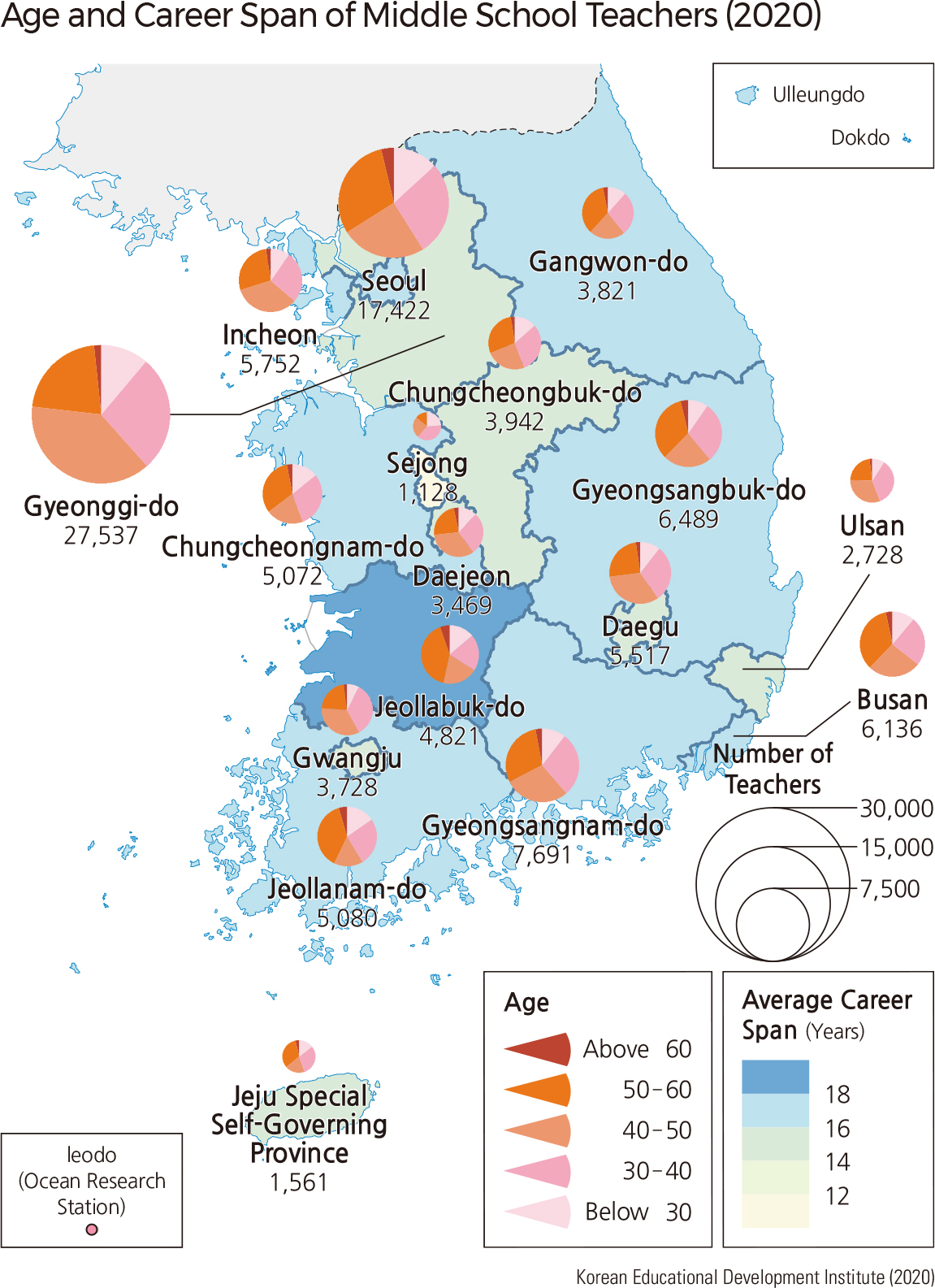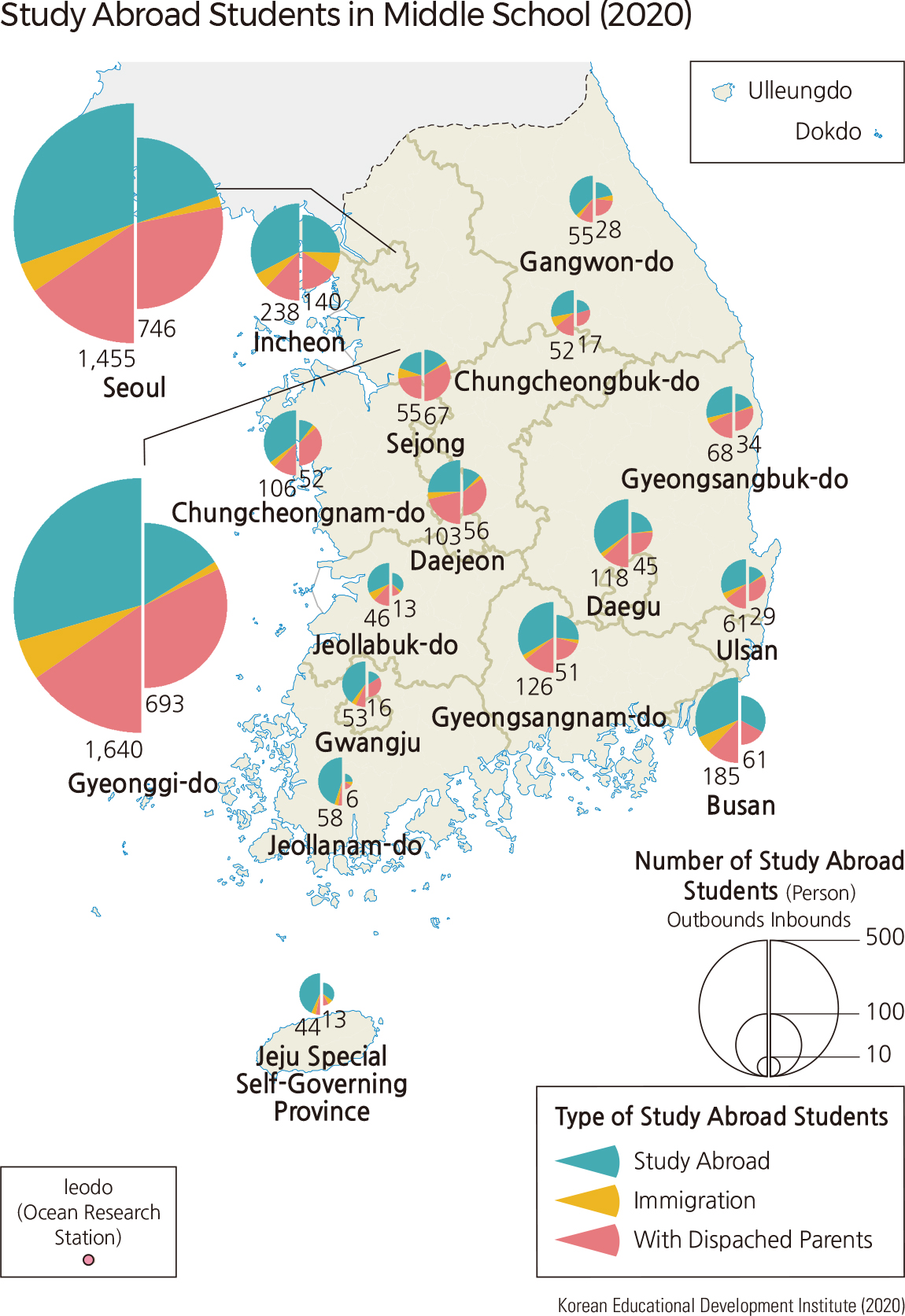English III 2021
Middle schools are classified as national and public schools and private schools, with as much as 80% of middle schools being national and public. The numbers of middle school classes and students in rural areas are relatively smaller than those in urban areas. Teachers in both rural and urban areas tend to be older because fewer new teachers are recruited due to the decreasing number of students. Multicultural diversity has rapidly increased in middle schools as well. Students of foreign families are mainly concentrated in Seoul and Gyeonggi-do, while students of international marriage families are distributed across the whole country, including rural areas. In addition, the number of middle school students leaving Korea to study abroad is larger than that of students returning after studying abroad.
Special education schools are responsible for educating students with disabilities. These special education schools have been established in metropolitan cities and in some small and medium-sized cities. However, many rural areas do not have such schools; thus, students with disabilities study with other students in the general schools through a type of integrated education. Korea’s high schools are classified as regular high schools for students planning to attend colleges and universities and as specialized high schools for students planning to seek industrial employment after acquiring specialized techniques and skills. In addition, special-purpose high schools have been established for education in foreign languages and the sciences. Many autonomous private schools, which have autonomy in education and financial operations, have also been established. Specialized high schools offer a unique education that conforms to the characteristics of the local industries, including agriculture, industry, commerce, and marine industries. Many middle and high schools had been operated in the form of a single-sex school where boys’ and girls’ schools are separated. This phenomenon continued until the 1990s, but from the end of the 1990s, boys’ and girls’ schools gradually converted to co-ed schools following the government policy. In addition, a number of co-ed schools have been established in the new residential areas. These trends have led to the significant increase of co-ed schools in the total number of schools since the 2000s.
|




